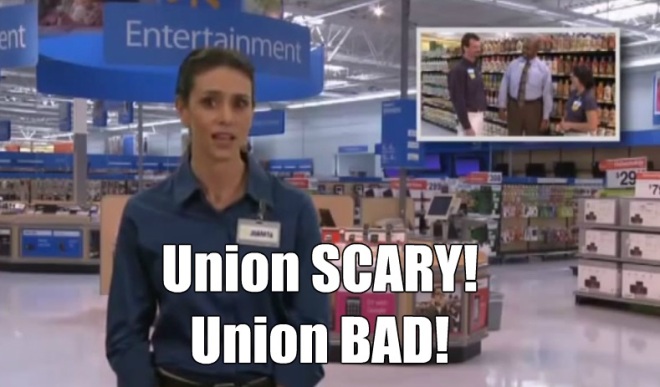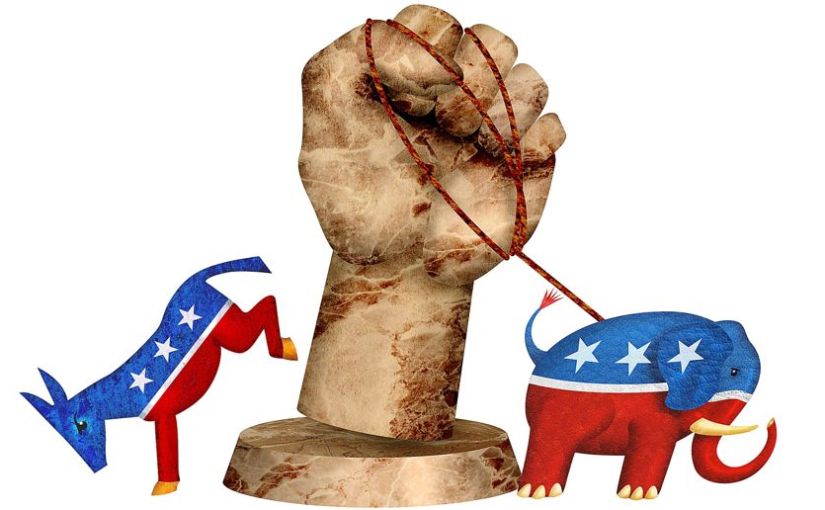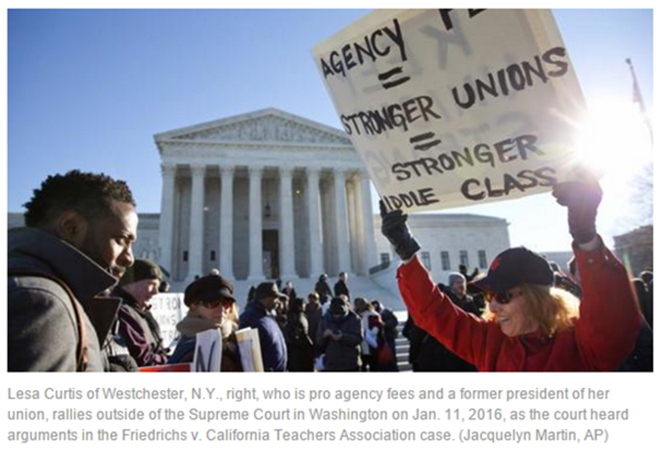by Ron Grossman, Chicago Tribune
I don’t belong to a union. I didn’t have to because my maternal grandfather was a member of the Amalgamated Clothing Workers of America. His brother was, too, and their sister belonged to the International Ladies’ Garment Workers’ Union. Another brother drove a taxi, a union button pinned to his cap.
They were part of a labor movement that was midwife to the American middle class.
Unions never enrolled a majority of workers. At their high point in the 1950s, they counted a third of American workers as members. But their impact was far greater. Where unions are strong, nonunion workers benefit because employers offer competitive wages to keep their workforce from defecting.
That’s how I got to wear a white shirt and tie, the dress uniform of the middle class. I was a child during the Great Depression, when my father sometimes drove a cab. Other times he was a furniture mover, and most often he was out of work. Then defense production for World War II kicked off an economic boom, and my father became a department store salesman.
There was no union, as many white-collar workers disdained the labor movement as beneath their newfound dignity. But salaries were decent, buoyed by the general rise in pay as unions got members a bigger slice of the pie. My father could afford for me to stay in school and go to college. So here I am. And not just me. Such was the experience of myriad families.
Think about that as the U.S. Supreme Court wrestles with the issues in Friedrichs v. California Teachers Association.
Earlier this month the justices heard oral arguments in the case that turns on the so-called no-free-lunch provision of the union contract in a school district near Anaheim, Calif. It requires teachers to pay a portion of the union’s dues even if they choose not to join. Several teachers sued, claiming that violates their First Amendment rights. Unions take political positions, the teachers noted, with which they might not agree.
By the union’s logic, all teachers benefit from the salary scale it negotiates. So shouldn’t all have to pay their share of the cost of negotiating a contract? Can’t the free-speech issue can be addressed by giving nonmembers a discount — subtracting an amount proportional to what the union spends on political activities?
Some legal scholars say it’s hard to imagine a line cleanly separating politicking from collective bargaining. Fair enough, but should the justices agree, it will close a chapter of what, in the heady days of the 1960s, was proclaimed “People’s History.” The story of the little guy. The kind who carries a lunchbox and a thermos to work.
Before unions, he long got the short end of the stick. His work day was arduous — 10 and even 12 hours was the norm — and extra pay for overtime was unheard of. In the needle trades, when orders backed up, the boss’ mantra was: “If you don’t come in on Sunday, don’t bother to come in on Monday.” Unions were handicapped by courts declaring them a “conspiracy.” Even when unions got a toehold, progress was painfully slow.
My grandfather supplemented his sweatshop wages by working evenings at home. I can still see him sitting behind a sewing machine, occasionally joining the conversation between running a line of stitches. Yet even then, the union provided a benefit: an exhilarating sense that a worker wasn’t on his own. My grandmother complained that all her husband wanted to talk about was “shop, shop, union, union.”
The benefits got more tangible in the postwar decades. Industries that had held union organizers at bay were organized. Assembly line workers got contracts, and the nation’s demography was radically altered. Most societies look like a pyramid: a few rich people at the top, a lot of poor people at the bottom, and a small middle class in between. But America’s profile got a potbelly: the middle class grew until, by 1971, it was larger than the upper and lower classes combined.
Ordinary folks bought homes and, every few years, could trade in their car for a newer model. They proudly watched their kids go off to college.
But beginning in the 1970s, the process was reversed. Decade after decade, the middle class declined and its clout was lost proportionally. Now a week doesn’t go by without the media or a blogger proclaiming that America’s middle class is getting squeezed out.
As the Great Recession eased, upper-income folks did nicely. Middle-class families went back to the short end of the stick. No voice insisted that they get a fair share of the pie — as the labor movement did at the end of the Great Depression. Union membership has declined to about 11 percent of the workforce. Organized labor’s remaining strength is in public-sector unions, and that is up for grabs — pending the Supreme Court’s ruling on the no-free-lunch issue.
Yet if its fate is sealed, it deserves a proper obituary. So let us remember the mothers and fathers of the middle class, brave souls who persuaded others to sign petitions asking for union representation. Who denied themselves a paycheck by voting to strike. Who walked picket lines. Who came home bubbling over with news of the shop and the union, the shop and the union.
Your Turn
What do you think the impact will be as the U.S. Supreme Court wrestles with the issues in Friedrichs v. California Teachers Association? Sound off in Comments, on the Union Built PC Facebook Page or in the #UnionStrong Facebook Group. And don’t forget to sign up for our monthly eNewsletter for articles like this delivered straight to your inbox.






